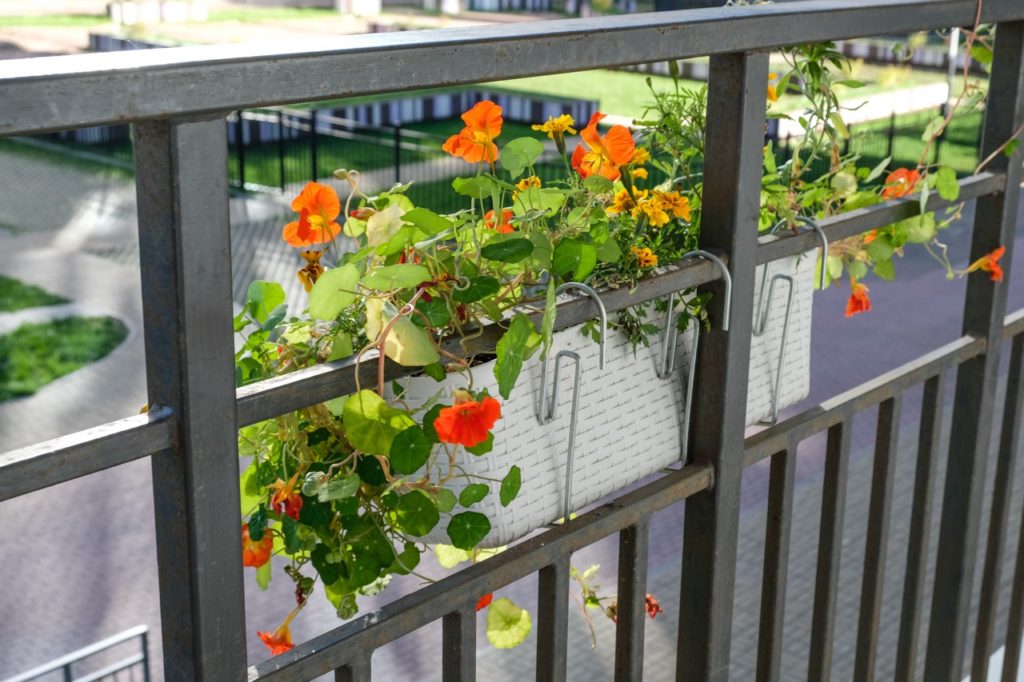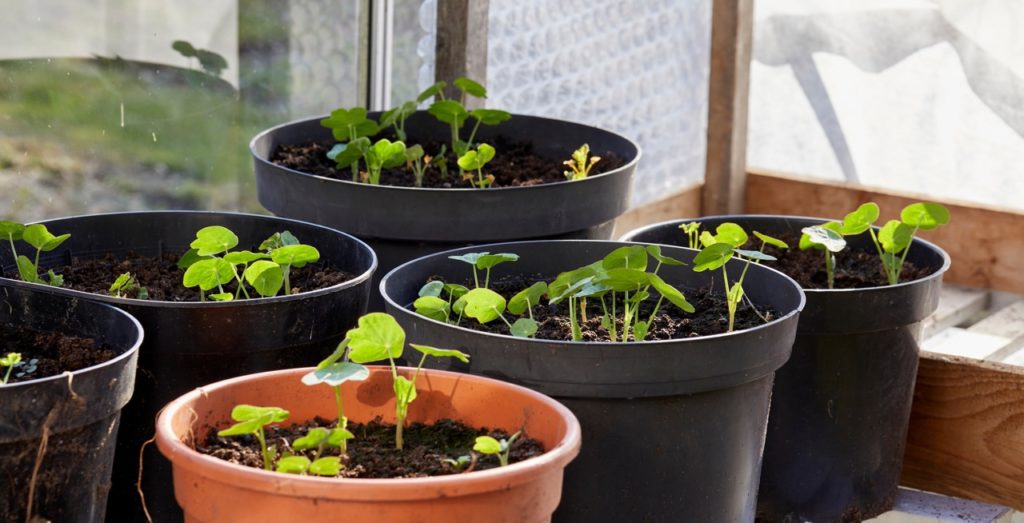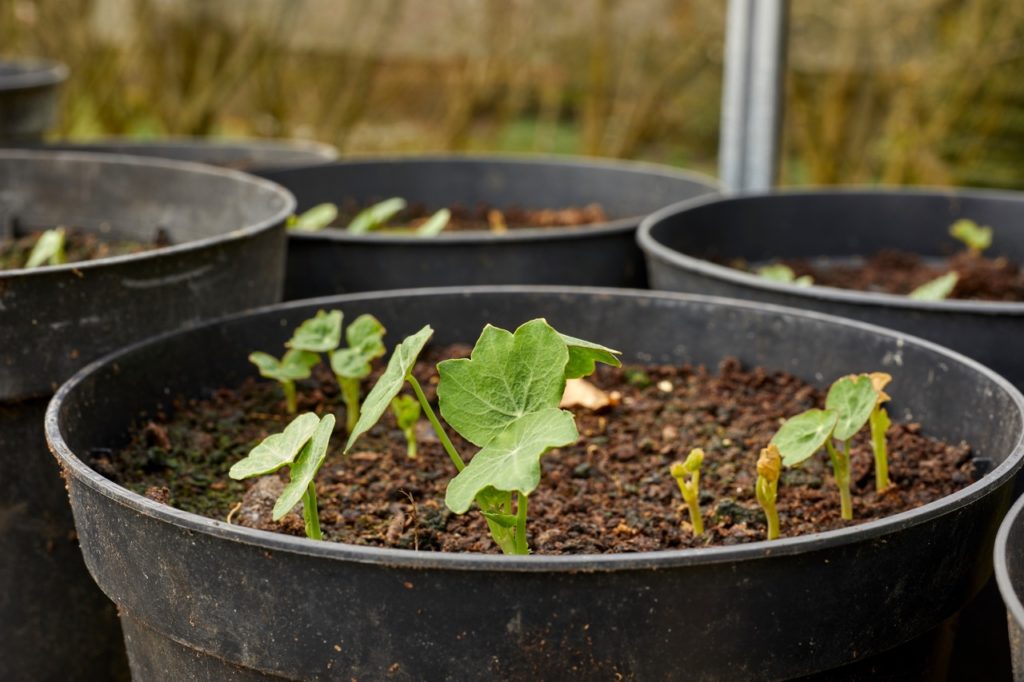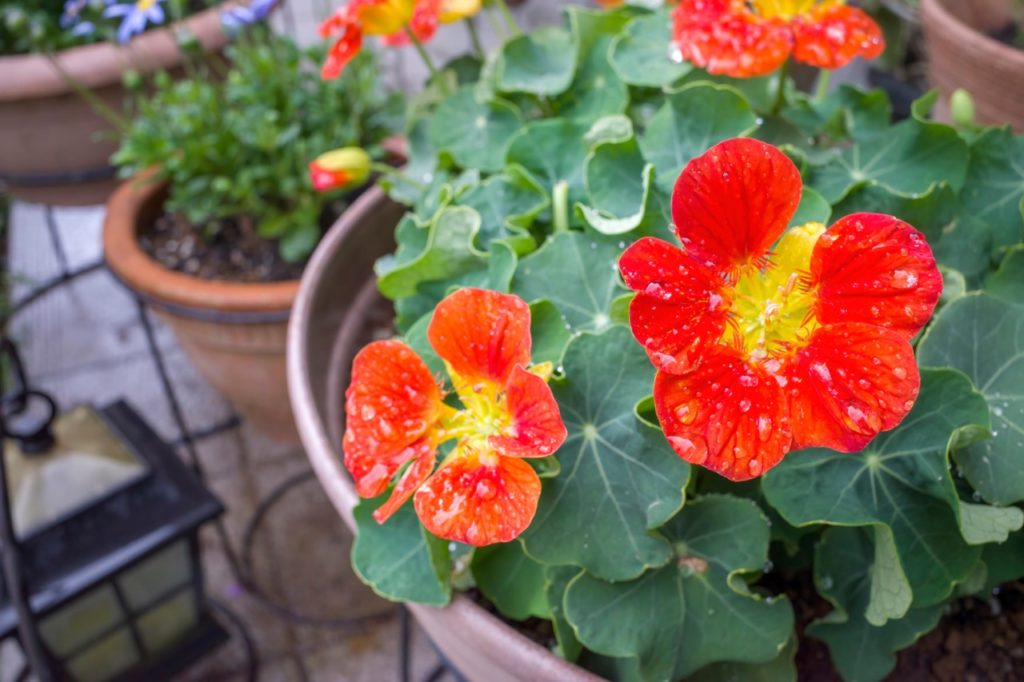Potted Nasturtiums: ‘Smaller Cultivars Make An Ideal Choice For A Container’

ANNUALS > NASTURTIUM > CONTAINERS

Elizabeth is a Permaculture Garden Designer, Sustainability Consultant and Professional Writer, working as an advocate for positive change. She graduated from the University of St. Andrews with an MA in English and Philosophy and obtained a Diploma in Applied Permaculture Design from the Permaculture Association.
Reviewed By COLIN SKELLY

Colin is a Horticulturist and Horticultural Consultant with experience in a range of practical and managerial roles across heritage, commercial and public horticulture. He holds the Royal Horticultural Society’s Master of Horticulture award and has a particular interest in horticultural ecology and naturalistic planting for habitat and climate resilience.
IN THIS GUIDE
NASTURTIUM GUIDES
Companion Planting
Container Growing
Indoors Growing
Sowing
Varieties
Nasturtiums are incredibly easy and attractive annual flowers to grow.
They are versatile plants that can be grown in a wide range of locations.
Not only do the flowers provide long-lasting, cheerful pops of colour, but these plants also have edible leaves, flower buds, flowers and seeds, and are great for attracting pollinators and aiding with pest control in an organic garden.
“Smaller nasturtium cultivars make an ideal choice for a container and this is how I tend to grow them, as they get far too big grown in my garden soil,” shares Master Horticulturist Colin Skelly.
“I’m particularly partial to their colourful flowers in salads.”
However, if you are short on space, you might wonder whether you can grow nasturtiums in containers, and, if so, how to do so successfully.
Potted Nasturtium Varieties
Nasturtiums are an ideal choice for container growing.
They can be a great choice for beautiful summer displays, trailing down and creating an attractively abundant effect.

There are a number of different nasturtiums for you to choose from when selecting options to grow in containers.
Both varieties of Tropaeolum minus and Tropaeolum majus are great for container growing.
The former produces smaller, busy plants, while the latter produces climbers and trailing plants.
Best Pots For Tropaeolum
There are almost endless options when it comes to choosing a container for nasturtiums, though which container you should choose will depend on the details of your own particular garden and on which type and variety of nasturtium you are planning to grow.
Some grow much larger and much more vigorously than others.
Nasturtiums might be grown in:
- Simple plant pots or other reclaimed containers.
- Window boxes.
- Larger pots or planters as part of mixed container displays.
- The planting pockets of vertical gardens.
- Hanging baskets or other hanging containers.

One important thing to think about is that whichever type of container you choose, these are plants that require good drainage.
Though the soil in containers should remain consistently moist through the growing season, excess water should always be able to drain away freely from the base of your containers.
When choosing a container, be sure to think about how large you can expect the nasturtium that you have chosen to eventually grow.
Container Compost
Since nasturtiums require free-draining conditions, it is a good idea to mix horticultural grit or gravel with a multipurpose peat-free potting mix or homemade equivalent in order to create your growing medium.

A mix of 1/3 grit, 1/3 homemade compost and 1/3 leaf mould, loam or loamy soil can work perfectly for growing these plants.
You can also simply add 1 part grit to 2 parts of a good quality peat-free potting mix that you have purchased.
Potting Up Nasturtium
Nasturtiums that you have purchased or those that you have grown from seed in spring should be planted into their summer containers sometime between May and August.
The flowers bloom between May and October, potentially right up until the first frosts.

When planting, make sure that the nasturtiums crown of leaves sits just above the surface of the soil.
Firm them into place and water them in well.
How Many Plants Per Pot?
Nasturtiums can be grown in containers on their own but it is worthwhile thinking about how they can be combined with other summer and autumn flowering plants to create beautiful mixed container displays.
How much space these plants will require will very much depend on which cultivar or cultivars you have chosen.

Remember, there are smaller dwarf varieties and larger climbers to choose from.
Many other flowers of the late summer and autumn make wonderful companions for nasturtiums in a mixed container display.
For an edible garden, you might also create mixed displays using nasturtiums and other edible salad crops.
Container Tropaeolum Care
Nasturtiums are very easy to grow and care for, even when growing them in containers, which will involve a little more effort than growing them in the ground.
Light & Location
The first thing to think about when it comes to caring for nasturtiums in containers is where the containers should be placed.
Remember that these are plants that thrive in a position in full sun.

In order to make the most of the benefits of growing these wonderful plants, it is also a good idea to consider placing containers so that the nasturtiums bring benefits to other edible crops growing in containers or in beds nearby.
The nasturtiums can act as a trap crop for pests and draw in a range of beneficial insects for pollination and pest control.
Watering
While nasturtiums growing in the ground outside rarely require watering, those growing in containers should be watered regularly throughout the growing season to keep the growing medium consistently moist.
You should not feed nasturtiums.
They do not need it and fertilisation can potentially encourage foliage growth at the expense of flowers.
Deadheading
Though not essential, deadheading your nasturtiums can prolong the blooming period and ensure the production of further flowers.

Remember, however, that you can harvest flowers before they fade, as these, along with the peppery leaves, make a great addition to your salad bowl.
Once these annual plants die back at the end of the growing season, you can simply remove them from the containers and add the plant material to your compost heap.
